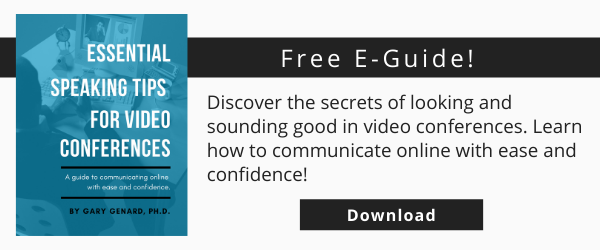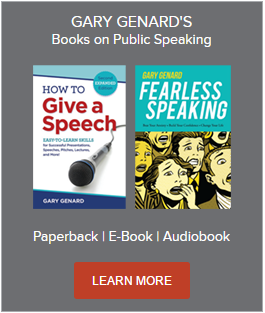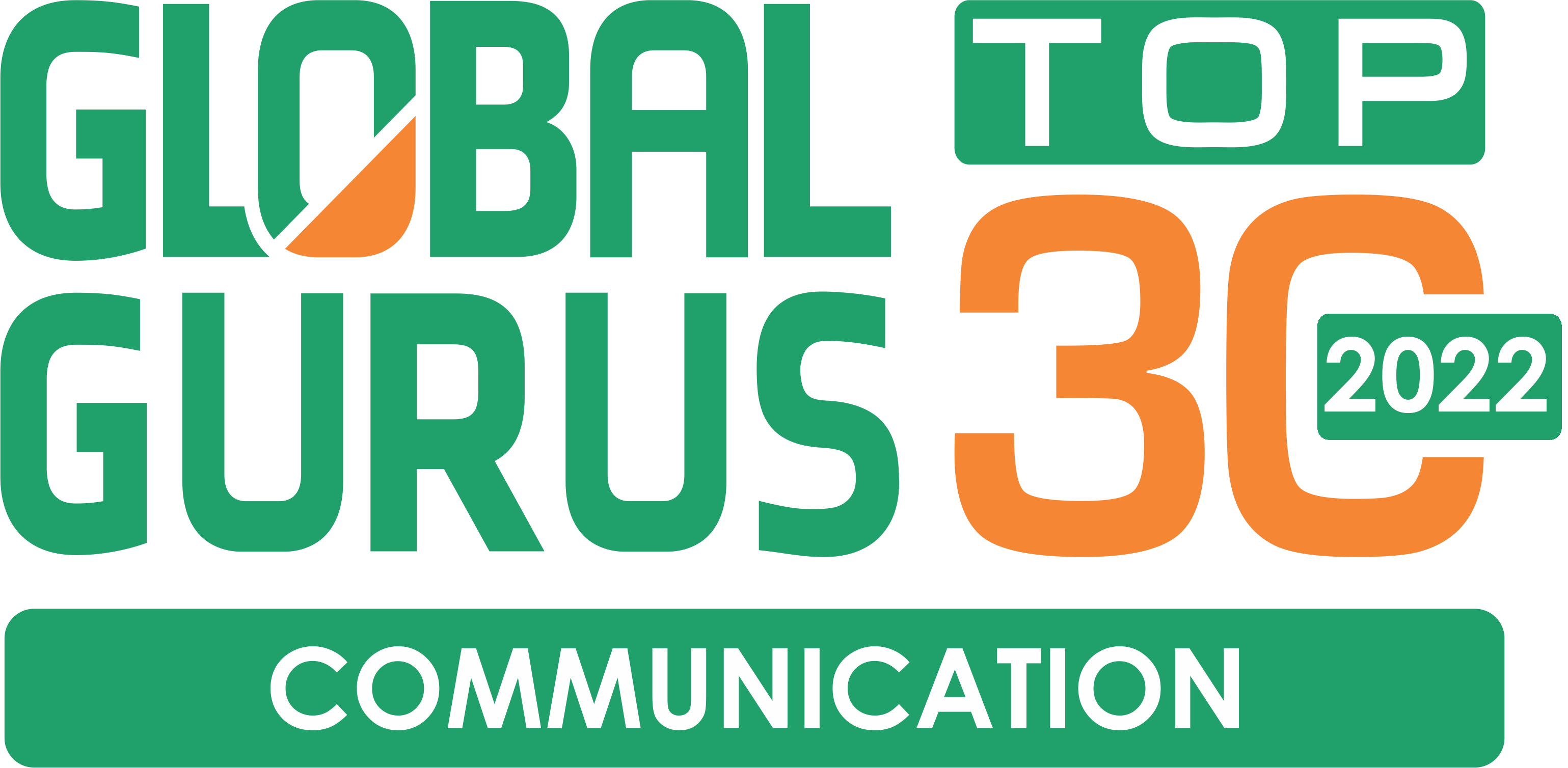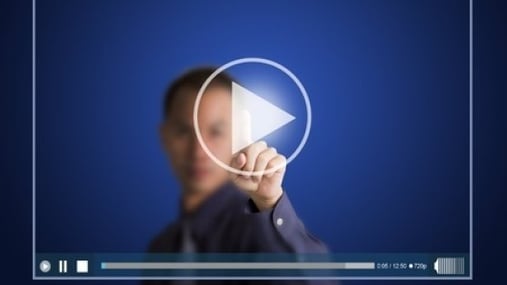
It was an amazing testament to the power of using videotaping in public speaking training. And it came when I least expected it.
As an actor and speech coach, I use video constantly to help my clients achieve stage presence and a powerful performance persona. So I’m used to hearing people say they dread seeing themselves—then adding, “It wasn’t as bad as I thought!” when they do.
It never fails. Videotaping proves itself over and over as an indispensable training tool of spoken performance.
Want your messages to resonate with listeners and move them to action? Grab this free resource that gives you a road map for the best practices in public speaking. It's my Insights cheat sheet, "7 Key Components of Successful Presentations." Get a head start on consistently great speaking when you take center stage!
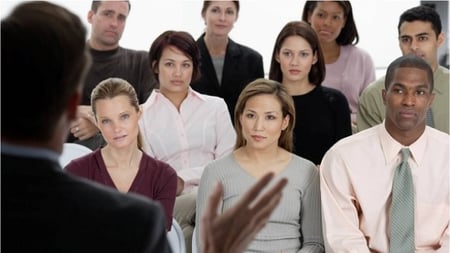
Video Shows You What Others See
But that day in The Genard Method’s training room was different. My client was a father of the bride preparing for the traditional wedding reception toast. He was excited and apprehensive and wanted to help make the day special for the newlyweds, just like everyone is in his situation.
The fact that he had a neurological condition to deal with as a speaker hadn’t made a huge impression on me. After all, he faced the same need everyone does who delivers a speech at a wedding, funeral, or special event: to speak to the best of his ability and reflect well on the occasion. So that’s what I was working with him on.
It was his reaction on seeing himself after our first taping that caught me off guard. His condition makes his gaze wander virtually constantly, and causes his head to jerk slightly from time to time. When he saw this on video, he was profoundly disturbed. I told him not to worry, that he couldn’t do anything about his condition. But he said he would do something—he would concentrate on staying still and direct his eye contact the entire five minutes of his toast.
And he did it. It really was an extraordinary demonstration of the power of concentration in a speaker. Equally important, it brought home to me as dramatically as possible just how valuable a video camera can be in preparing for public speaking appearances. (To strengthen your own eye contact, see my article on how to dramatically improve your eye contact with this technique.)
Below are four more reasons why videotaping your own practice sessions is a great idea.
Video Reveals Your Energy Level as a Speaker
Most people understandably focus on their content as they prepare to speak: “What am I going to say, and how am I going to get it across?”
But it’s that “how to get it across” element that assumes such an important part of an audience’s reception of you and your message. And that has partly to do with the amount of energy you project across the footlights.
It’s a performance concept, and an essential element of an actor’s toolkit; and business and professional speakers should be aware of it. Discussing energy levels with clients is one thing. But watching them become aware of it as they see themselves is another.
That renowned speech coach Sir Isaac Newton said it best: “For every action, there’s an equal and opposite reaction.” Give your audience an energetic performance and they will respond more enthusiastically in return. Video will help you see immediately where you fall on the speaker’s energy meter.
Video Can Help You Stay More Focused in Presentations
“I look like I’m following a mouse with my eyes!” my client said. The client happened to be a United States senator, and our coaching session was taking place in the U.S. Capitol building. And in this case, video was almost literally an eye-opener.
We were simulating an upcoming committee hearing, and so our session involved the senator sitting at a table speaking. One of his staffers videotaped our first take, and we watched it. That’s when the senator saw what his eyes were doing while he was speaking. He meant that it looked like he was watching a mouse run around on the table.
We all got a chuckle at that, and then got down to business. The video camera continued to tell the simple truth—which was that the senator, on the spot, developed the ability to look at his listener with unwavering attention. As practiced performers, politicians often have the talent to improve their outward behavior that quickly—but the video camera was the tool that provided the leverage.
You’ll find 75 “quick tips” for your own great performances in my book How to Give a Speech. Discover the public speaking handbook that’s filled with practical, hands-on skills for delivering
confident and impactful speeches, presentations, sales pitches and lectures!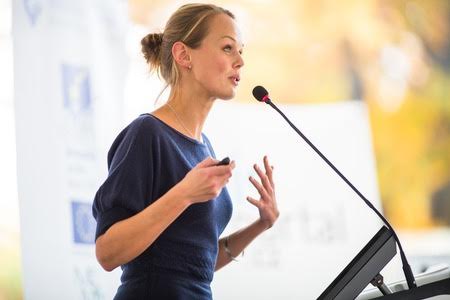
Video Puts Your Public Speaking Body Language Front-and-Center
“I wander back and forth constantly.”
“I seem to be swaying in an invisible breeze.”
“I’m listing to starboard!”
Ask any speech coach, and they’ll tell you they hear comments like these all the time from clients watching themselves on video for the first time. I call it having an out-of-body experience: seeing yourself as others do, and often reacting similarly.
In this way, video is a device for accomplishing something remarkable in an instant: showing you how nonverbal communication can trump anything you say. Offer a great topic and prepare to within an inch of your life—then do something odd physically while you’re speaking and feel your credibility and impact dissolve. Public speaking is a performance art, and video will show you how much your body language contributes to the form. Learn the 5 key body language tips of public speaking that every presenter needs to know!
Allow me to share the true story of my client, a young professional woman who dressed impeccably, the day she watched herself on video. Her presentation was carefully prepared, with relevant sales figures and a strong PowerPoint deck. But her mind was consumed with one habit she displayed while presenting.
“OMG. . . . Why am I rubbing my belly?!” she screamed. The audience, of course, would have been wondering the same thing, if we hadn’t caught the habit in time in our practice session. Thanks, videotape.
Video Can Boost Your Confidence
And now for the best news of all: video is a confidence booster.
Yes, it will show you some of the things my clients mentioned above experienced. But remember that in each case, horrified viewing led to solid improvement. That “It’s not as bad as I thought!” reaction usually leads in turn to focused practice and skills advancement.
The best aspect of video in this regard is the Before-and-After Effect. Improvement in public speaking is sometimes hard to quantify; after all, it’s not a case of “either the mathematical equation works out or it doesn’t.” Video, however, can fill that gap, becoming a marvelous tool for quantifying skills development.
It’s all there on tape, you see: your increasing ease and control from Take 1, to Take 2, to however many takes it takes! So use video, on a high-def camera or your tablet or your phone. You might even have the response, the last one I’ll mention, that many clients do who see just how far they’ve come:
“Wow.”
You should follow me on Twitter here.

